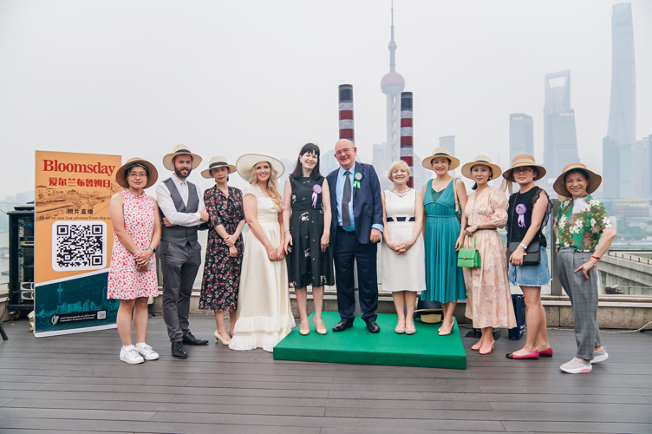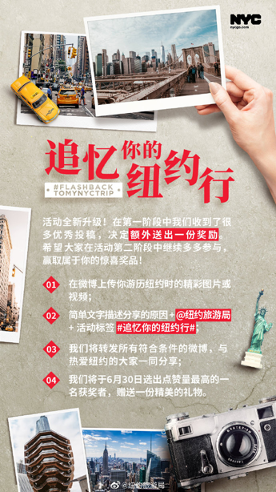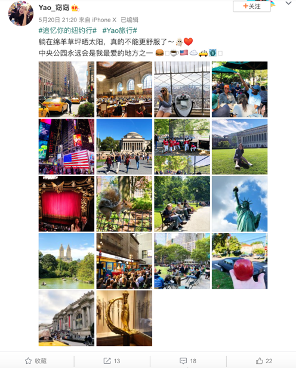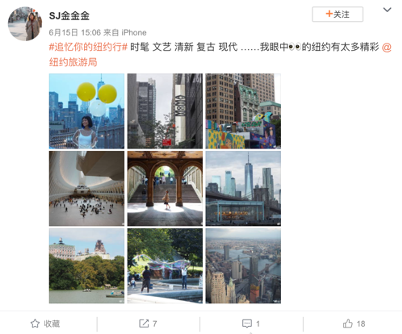3 ways destination brands can stay active in China
Promising signs for travel’s reopening are met with enthusiasm in China as destinations like the Maldives, Sri Lanka and some European countries prepare to reopen its external borders to Chinese tourists. While governments around the world mandate country-entry policies, visa requirements and quarantine strategies, there are still meaningful ways for destination managers to stay active in the China market and influence future travelers.
1. Create simple yet meaningful social media activities
Stay top of mind with Chinese travel lovers by conveying supportive, optimistic and welcome messages through social media platforms. Promotions with eye-catching design and a timely, sentimental and easy call to action can prompt quick consumer response with high engagement.
Take for instance, NYC & Company. In early May, the city initiated an interactive Weibo post to encourage its followers to share their golden NYC memories (with photos) and hashtag #FLASHBACKTOMYNYCTRIP. Participants were entered into an online draw. By the end of June, this Weibo activity reached more than 2.56 million readers and received hundreds of great photos and user generated content (UGC). The official destination account selected and retweeted posts by online followers with touching words, which enriched NYC’s official account with authentic, fresh content and strengthened its emotional connection between Chinese travelers and the city. This simple, yet cool idea, raised spirits and drove engagement among Weibo users. The activity garnered so much interest that it was divided into two phases and increased gifts to deliver feedback to passionate participants.
2. Leverage live streaming capabilities for digital travel consumption
Storytelling is a critical component to effective travel marketing. With digital consumption at an all-time high, live streaming is an excellent way to engage consumers. However, creativity is a must as more destinations compete in this space. Virtual experiences like cooking classes, local market missions, special museum exhibits and even prayer ceremonies are just a few ways destinations are sharing unique cultural experiences online. Additionally, announcements about reopening plans and safety measures are of interest.

For example, Visit Maldives and its global marketing and PR agency held a live-streaming event to announce it would welcome visitors beginning this July. The event themed Maldives, the sun will shine again attracted 85,000 online participants. During the live broadcast, the head of Visit Maldives spoke and welcomed tourists from around the world. It set a good example of kicking-off the recovery of tourism in a virtual way.
Generally speaking, live streaming should not be longer than 2 hours, it should break through language barriers, be user-friendly on both mobile and PC-end interface display, and seamlessly link online-to-offline transitions. At the same time, the content should be easy to read/watch and easy to share. Destination managers may also consider embedding sales products into the experience. Digital campaigns with creative design, interactive games and animation can highlight attractions and incentivize consumers to create original content, which will amplify the marketing effort. Popular UGC social platforms like Mafengwo and TikTok are effective live-streaming partners for destinations to co-op in the China market. Third-party promotions on these platforms can help destinations reach new audiences.
3. Host local market activities and events
Since the start of the pandemic, most destinations paused its marketing budgets. So, one can imagine the excitement of travel media/KOL to be invited to a boutique media event. Especially under the current circumstance, a small to mid-scale media and KOL event (that respects social distancing guidelines), is a good way to maintain and strengthen communication and relationships with key media stakeholders. Given the extended period of isolation, it can also fulfill people’s desire to reunite with industry friends and provide a forum to exchange ideas and information in a safe and meaningful way.

For instance, Tourism Ireland worked with its local Consulate in Shanghai to host a Bloomsday themed event on the Bund in June. Bloomsday is an annual celebration of the life and work of Ireland’s most famous author, James Joyce. Since awareness of the festival is not extensive in China, Tourism Ireland took this opportunity to share the unique vintage-style event with select media and KOLs. Inspired by the enthusiasm for James Joyce and his famous novel Ulysses, the Irish Consulate gathered Irish and Chinese friends and media to experience 1904 Dublin complete with period costumes. The Bloomsday gathering offered media a timely angle that generated quite a few positive stories.
As we navigate the post-COVID travel market, destination brands will need to reimagine story angles that meet the evolving needs of travelers. We are living in a new world. Travel will look different and so will the stories we tell.










